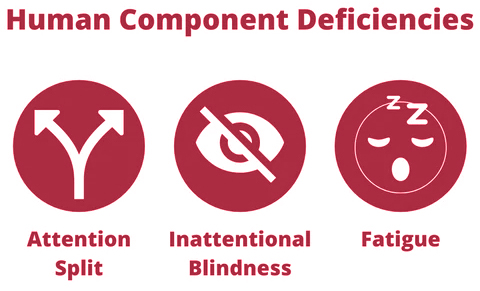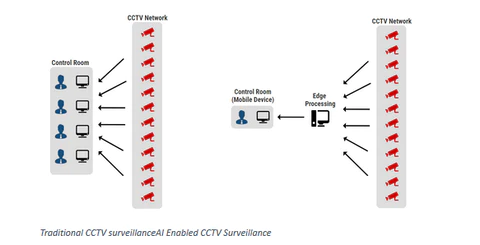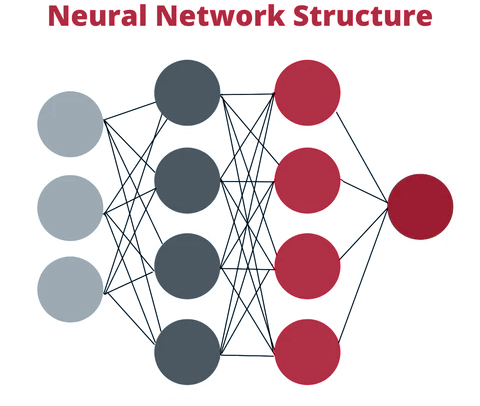Menu
Artificial intelligence is the new buzz. It has been romanticized by pop culture and has many onlookers theorizing about our imminent doom, but before Skynet takes over humanity, how can we make use of this emergent technology in the context of commercial CCTV surveillance?
At Surion we often tell our clients that our intelligent Sense system eliminates the possibility of human error. What do we mean by this? Most existing surveillance networks employ the traditional approach to CCTV security whereby large numbers of cameras are monitored by significantly fewer observers in a control room either on-site or off-site. Too many cameras and too few eyes. This method is inefficient by nature and leaves much to be desired.
With regards to poor event detection rates, it comes as no surprise that many of the inefficiencies are introduced by the human component.
Several factors contribute to poor event detection rates such as:
Attention splitting between monitors
Inattentional blindness
Fatigue

Many studies have been performed around CCTV operator detection rates in several contexts and with varying results, however it is generally accepted that increasing the number of screens which an operator needs to monitor will decrease the event detection rate and hamper system performance. Ultimately, if an event of interest is not detected by the observers, no response can be formulated. It is therefore quite clear that the observer to camera ratio is important in determining system performance.

Inattentional blindness is a phenomenon which was investigated in a study called “Gorillas in the midst” which was carried out by Harvard. They found that the likelihood of noticing an unexpected object depends on the similarity of that object to other objects in the display. For commercial applications where identifying a person amongst many other people is the main objective, the problem becomes more pronounced.
Fatigue is unavoidable in CCTV observers and unless you implement extra shifts and employ more observers, your observers will experience a decrease in focus.
With regards to network scalability in a traditional CCTV surveillance network, one would simply install more cameras and employ more observers in order to maintain an acceptable level of system performance. Essentially it is a linear relationship between CCTV network size and operating cost with no apparent cost benefit in larger systems.
AI enabled CCTV reduces human error
Simply put, AI enabled CCTV surveillance will abstract event detection away from the observer and allow the observer to apply more focus towards responding to the event once it has been detected. In theory a single observer with AI assistance could monitor/supervise hundreds of cameras and the only limiting factor would be how quickly the operator could analyze and respond to the detected events.
AI enabled CCTV reduces cost in commercial applications
The costs associated with training and employing more observers is completely bypassed and the only cost in expanding networks would be the initial infrastructure cost i.e. installing cameras and running network cables.
Through AI enabled CCTV it seems we have managed to kill two birds with one stone, what more could you ask for? In practice the solution is not as trivial.
In order to understand the challenges faced when implementing AI enabled surveillance, we must understand how AI would go about assisting operators. It all comes down to object detection and recognition through computer vision and neural networks.
are layers of algorithms formed into complex structures which are designed to imitate neurons in the human brain and thus provide some of the deep learning capabilities of a real brain. Every camera on the CCTV network provides a continuous stream of data to the neural network much like your eyes provide data for your brain to process. The neural network takes this data, pushes it through its algorithm layers and provides output for interpretation.
https://www.youtube.com/watch?v=bfmFfD2RIcg
(What are Neural networks?)
Much like a newborn child, a neural network will not recognize something it has never seen before, let alone put a name to it. However, if you teach the child that all yellow round objects are in fact tennis balls, then from that point forward the child will have an easier time recognizing tennis balls as it now knows what to look for. The more tennis balls the child sees throughout its life, the less likely it is that the child will misidentify a tennis ball. We can now see how the performance of a neural network is dependent on the extent of its training or “life experience” which is in turn dependent on the volumes of training data available.

In conclusion, if sufficient training data is available, AI enabled CCTV surveillance can provide several system performance and scaling cost benefits. This will not only revolutionize the commercial CCTV landscape, but will also provide several other avenues of system level integration to provide insightful data analytics commercial businesses.
Compiled by
Lyle Botha
Engineer